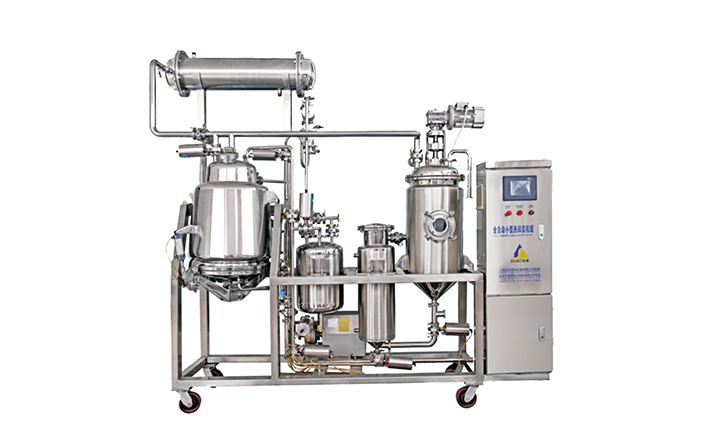An extraction tank is a specialized vessel or container used in various industries to separate desired components from raw materials or mixtures through extraction processes. It is commonly used in chemical, pharmaceutical, food, and oil industries. The extraction process typically involves dissolving or separating a target substance from a solid or liquid mixture using a solvent or other extraction methods.

Tank: The tank body is the main body of the extraction tank. The material is mostly stainless steel, which has good corrosion resistance, strength and sanitation, and can adapt to various acid and alkali chemical environments. For some special extraction processes, tank bodies made of glass, polytetrafluoroethylene and other materials may be used.
Stirring device: The stirring device includes a stirrer and a drive motor. The stirrer ensures the correct contact between the solvent and the extracted material. The motor provides power for the stirrer, and the stirring speed can be adjusted through a frequency converter to meet the needs of different extraction processes.
Inlet and outlet: The feed port is used to input the raw material liquid and the extractant to be extracted into the extraction tank, and the discharge port is used to discharge the raffinate phase and the extraction phase after extraction.
Temperature and pressure control systems: Pressure relief valve and temperature sensor mechanism monitor the temperature inside the tank to achieve precise temperature control and is used to handle high pressure conditions.
Loading: The raw material (solid or liquid) is loaded into the tank.
Solvent Addition: A solvent is added to the tank to dissolve or separate the desired components from the raw material.
Mixing: The mixture is agitated to ensure thorough contact between the solvent and the material.
Extraction: The target components dissolve into the solvent, forming a solution.
Separation: The solution is separated from the remaining material.
Recovery: The solvent is often evaporated or distilled to recover the extracted components.
Pharmaceutical Industry: Extracting active pharmaceutical ingredients from plant materials or chemical mixtures.
Food and Beverage Industry: Extracting flavors, oils, or essences from natural sources.
Chemical Industry: Separating specific chemicals from mixtures or purifying raw materials.
Oil and Gas Industry: Extracting oils, fats, or other hydrocarbons from raw materials.
Environmental Applications: Removing pollutants or contaminants from water or soil.
High efficiency: Dynamic extraction can complete the extraction work in a short time and achieve efficient extraction.
Easy to operate: Some extraction tanks are highly automated and controlled by a central controller, making them easy to operate.
Precise temperature control: The extraction temperature can be controlled and displayed, which helps to ensure the stability of the extraction effect.
High mass transfer efficiency: The rotating rotor greatly improves the liquid-liquid mass transfer efficiency, reduces the height of the device, and reduces the floor space and cost.
As an important industrial equipment, the extraction tank provides strong support for the separation and purification of substances in various fields.
GET A QUOTE